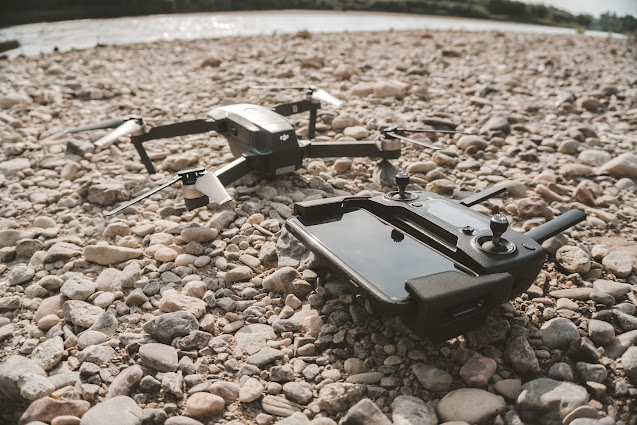UAV Magnetometer: An Advanced Technology for Methane Detection
Unmanned Aerial Vehicles (UAVs) have evolved from military applications to versatile tools for various industries, including in projects like methane detection. These drones have transformed various industries with their versatility and capability to access hard-to-reach areas. One of the most significant advancements in this field is the integration of UAVs with magnetometers which are used extensively in UAV methane detection projects. They offer unprecedented opportunities for precise and efficient methane detections. In this article, we will delve into the advancements in UAV magnetometer technology and its application in methane detection.
Integration of UAVs and Magnetometers
The integration of UAVs with magnetometers has opened up new
possibilities in methane detection. UAV magnetometer systems consist of a UAV
platform equipped with a highly sensitive magnetometer sensor. These sensors
can detect minute variations in methane with pinpoint accuracy.
The Importance of Methane Detection
If you have been following the news, you would have surely heard about the dilemmas, controversies, and conflicts surrounding the topic of climate change. Both pollution and harmful gases have come in to affect these massive changes. To understand why methane detection is crucial, we need to know first about the gas itself. Alongside carbon dioxide, nitrous oxide, and various other gases, methane has had a vital role in effecting climate change. This gas is released from both synthetic and natural sources. These resources can include natural processes, livestock, and fossil fuel extraction. Detecting and quantifying methane emissions is vital for understanding its impact on the environment.The traditional methods of methane detection are quite
backdated and often involve various ground-based equipment. The disadvantage
here, however, is that working with these methods and instruments can be
time-consuming and limited in their reach. UAVs equipped with magnetometers
offer a game-changing solution, enabling efficient and widespread methane
detection.
UAV Magnetometer Technology
Magnetometers are sensors whose specific aim is to detect the
changes in the magnetic field of the Earth. But, they are also useful for
methane detection. Through the use of the sensors, they can indirectly help
locate methane emissions by detecting disruptions in the magnetic field. Most
of the variations in methane gases are caused by the presence of ferrous
materials associated with methane sources. UAVs equipped with magnetometers can
detect these disturbances and pinpoint potential methane leakages.
UAVs have also gained popularity in geophysical surveys.
These vehicles are able to access remote or challenging terrains with ease.
Equipped with various sensors, UAVs can collect data from vantage points that
were previously inaccessible. This includes rugged landscapes, dense forests,
and areas with potential safety hazards. UAVs have revolutionized the way
geophysicists conduct surveys by reducing costs, minimizing risks, and
increasing data accuracy.
Advancements
in UAV magnetometer technology have
made these systems more reliable and accurate for methane detection. Some key
developments include:
● Miniaturization: Modern magnetometers
are smaller and lighter, making them suitable for integration into UAVs without
compromising the vehicle's flight performance.
●
Improved
Sensitivity: The sensor technology in the UAVs has been enhanced to
facilitate maximum sensitivity of magnetometers. This allows them to detect
even subtle changes in the Earth's magnetic field.
●
Real-time Data
Processing: Magnetometers equipped with UAVs can process data to provide
real-time and immediate feedback and alleviate instant-decision making.
● Integration with Other Sensors: UAVs
can be equipped with multiple sensors, such as gas analyzers and thermal
cameras, to complement magnetometer data and improve methane detection
accuracy.
Applications of UAV Magnetometers in Methane Detection
● Oil and Gas Industry: Methane emissions
from oil and gas facilities are a significant concern. UAVs equipped with
magnetometers can perform regular inspections of pipelines and wellheads,
quickly identifying potential leaks and minimizing environmental impact.
●
Agricultural
Sector: Livestock farming is a notable source of methane emissions. UAVs
can help farmers monitor their operations and implement methane reduction
strategies by detecting gas leaks from manure storage facilities.
●
Natural Gas
Infrastructure: The distribution of natural gas involves pipelines that can
develop leaks over time. UAVs equipped with magnetometers can survey these
pipelines, enhancing safety and preventing methane leakage.
● Environmental Monitoring: UAV methane
detection projects make use of UAV magnetometers in surveying large areas. This
ranges from wetlands and landfills to detecting methane emissions. The data
gathered from these surveys are beneficial in studying methane emission impact
on our entire ecosystems.
Challenges and Future Directions
While UAV
magnetometer technology holds immense promise for methane detection, there are
challenges to overcome:
● Methane Background Levels: Differentiating
between natural methane sources and emissions from anthropogenic activities can
be challenging, as the Earth's magnetic field is influenced by various factors.
●
Data
Interpretation: Interpreting magnetometer data and distinguishing
methane-related anomalies from other magnetic disturbances require advanced
algorithms and data processing techniques.
● Regulatory Frameworks: The use of UAVs
for methane detection may be subject to regulatory restrictions and privacy
concerns, which need to be addressed for widespread adoption.
Looking
ahead, the future of UAV magnetometer technology for methane detection is
promising. Further research and development efforts are likely to result in
even more sensitive and accurate sensors, improved data analysis methods, and a
clearer regulatory framework for UAV operations in this domain.




Comments
Post a Comment